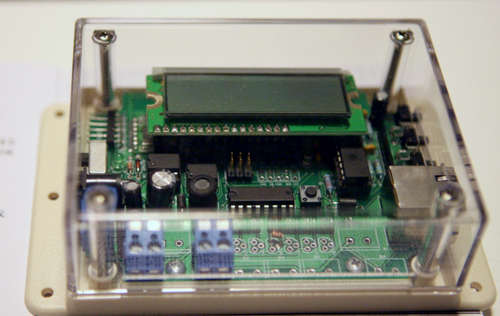In the opening day presentation, Autodesk The Toolmaker cast a vision of empowered makers harnessing The Internet of Things.

I’m taking a break from meetings on the official day one of Autodesk University 2011 in Las Vegas to record my initial impressions. Normally the GraphicSpeak team attends an event, then takes time to sift through everything we’ve learned and observed before reporting. But Autodesk University has become so big, and Autodesk is moving so rapidly on so many fronts, it feels necessary for me to record some inital impressions, then loop back later and put it all in context. I know my GfxS colleague at AU, Kathleen Maher, is going through a similar angst calculus; it will take us a few days to sort it all out.
I’ve been attending Autodesk University for more than 20 years. In the early days the emphasis was strictly user education. Then Autodesk realized a user conference is a great place to do marketing, and it started using AU as a place to cast the vision and rally the troops. For the past several years the Big Theme message has been about new disruptive technology “coming soon.” This year the Big Theme clearly is that new disruptive technology has arrived.

The main stage presentation today featured several heroes of the revolution; the revolution being the Internet of Things. People are taking new devices like the Arduino open-source electronics prototyping platform, incredibly inexpensive sensor chips, basic Web programming skils, and inexpensive rental access to CNC routers, milling machines, and 3D printers to create new inventions and manufacture one-of-a kind products. The story is not news to regular GraphicSpeak readers; we’ve been covering the bits and pieces of it. But stopping to take a look at the big picture, as Autodesk did for AU attendees today, was an “oh my goodness” moment.
To tell the story, Autodesk invited several individuals on the cutting edge:
- E.J. Sabathia of Moon Express: “I don’t work for a government agency … I’m making a robot that will go to the moon.”
- Jeff McCann of Because We Can: A husband-and-wife design/build studio that rarely creates drawings, because they go from model to 3D objects using an inexpensive CNC router from ShopBot. They are growing rapidly doing custom kiosks, office furniture, and soon whole buildings.
- Mark Hatch, CEO of TechShop: “For the price of a bad Starbucks addiction you can change the world.” Hatch says his goal is to harness the untapped resource of time and talent available in the free time of the professional class. Using the “cheap, easy, and powerful” tools available for rent at TechShop, Hatch says people are launching products in days or weeks; an inventor no longer needs the resources of a large company and its factories to make a difference. One TechShop user went from an idea for a new iPad cover to $1 million in sales in less than 90 days.
- Chris Anderson, Editor-in-Chief of WIRED Magazine: Anderson’s grandfather invented automated lawn sprinklers that ran off a timing mechanism. He sold his idea to a big manufacturer because it was the only way his product could get to market. Anderson decided to try a 21st Century equivalent, and gathered a few friends. They came up with OpenSprinkler, an open-source Web-enabled sprinkler valve controller.
Anderson says today tools are available which allow people to identify a problem that intrigues them and create something that makes a difference, without waiting for a big corporation to decide there is a market for a device. Anderson says the last decade was about finding new social and innovation models on the web; the next decade will be about applying them in the real world.
What’s the angle?
So what’s Autodesk’s interest in all this? As CEO Carl Bass pointed out, Autodesk is a tool maker, and it wants to be the toolmaker of choice for this revolution. Over the past 12 months Autodesk has released a wide variety of apps and desktop tools that are free or incredibly cheap, to seed this new market of makers. None of these products have cannibalized its sales of professional tools to its existing user base; instead they are taking the Autodesk brand into new places. There are priceless lessons to be learned, Bass says, from having a 10-year-old user of Autodesk 123D Catch point out shortcomings or request new features. (Regular readers know Autodesk 123D Catch by its Autodesk Labs name, Project PhotoFly.)





